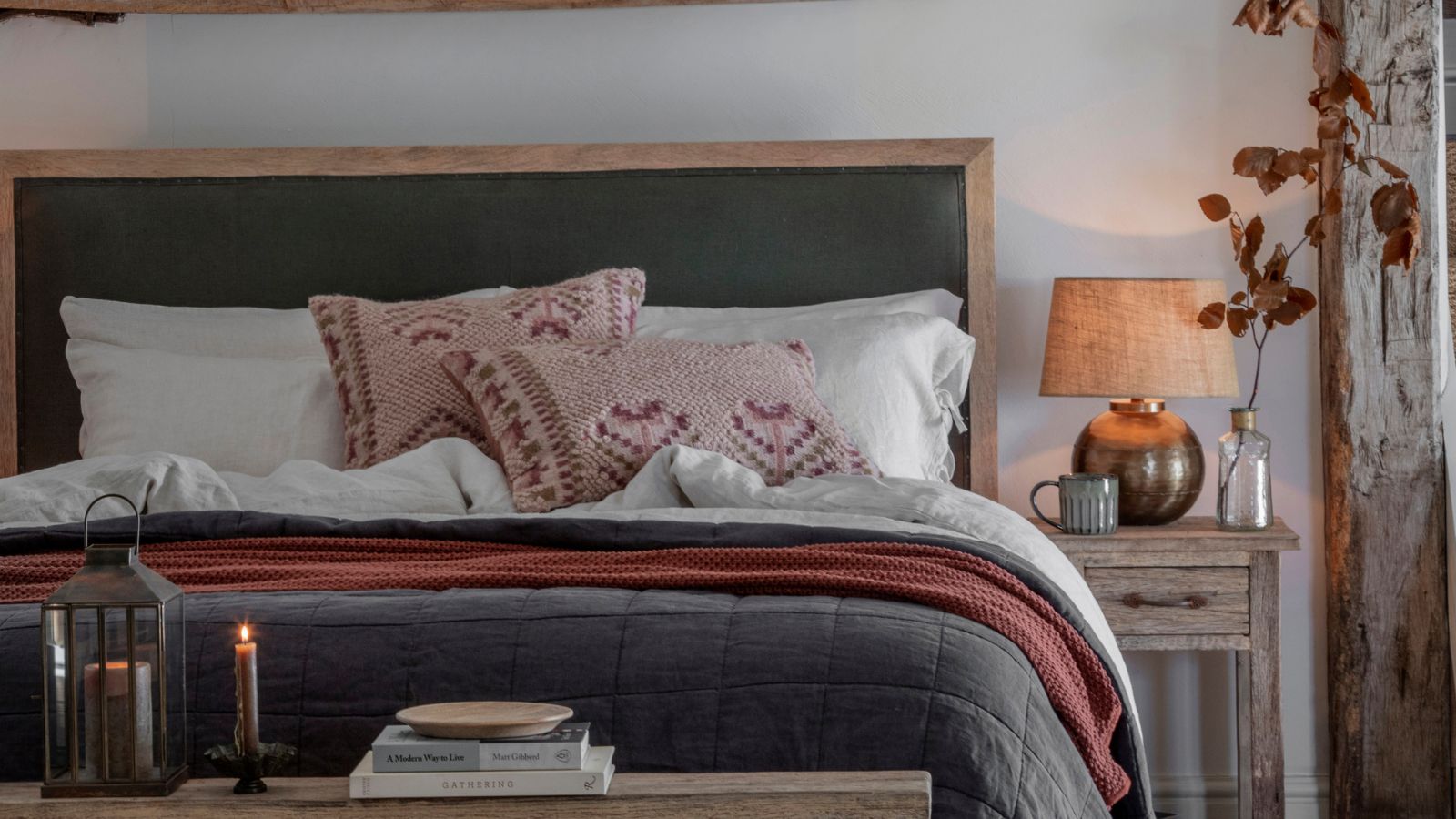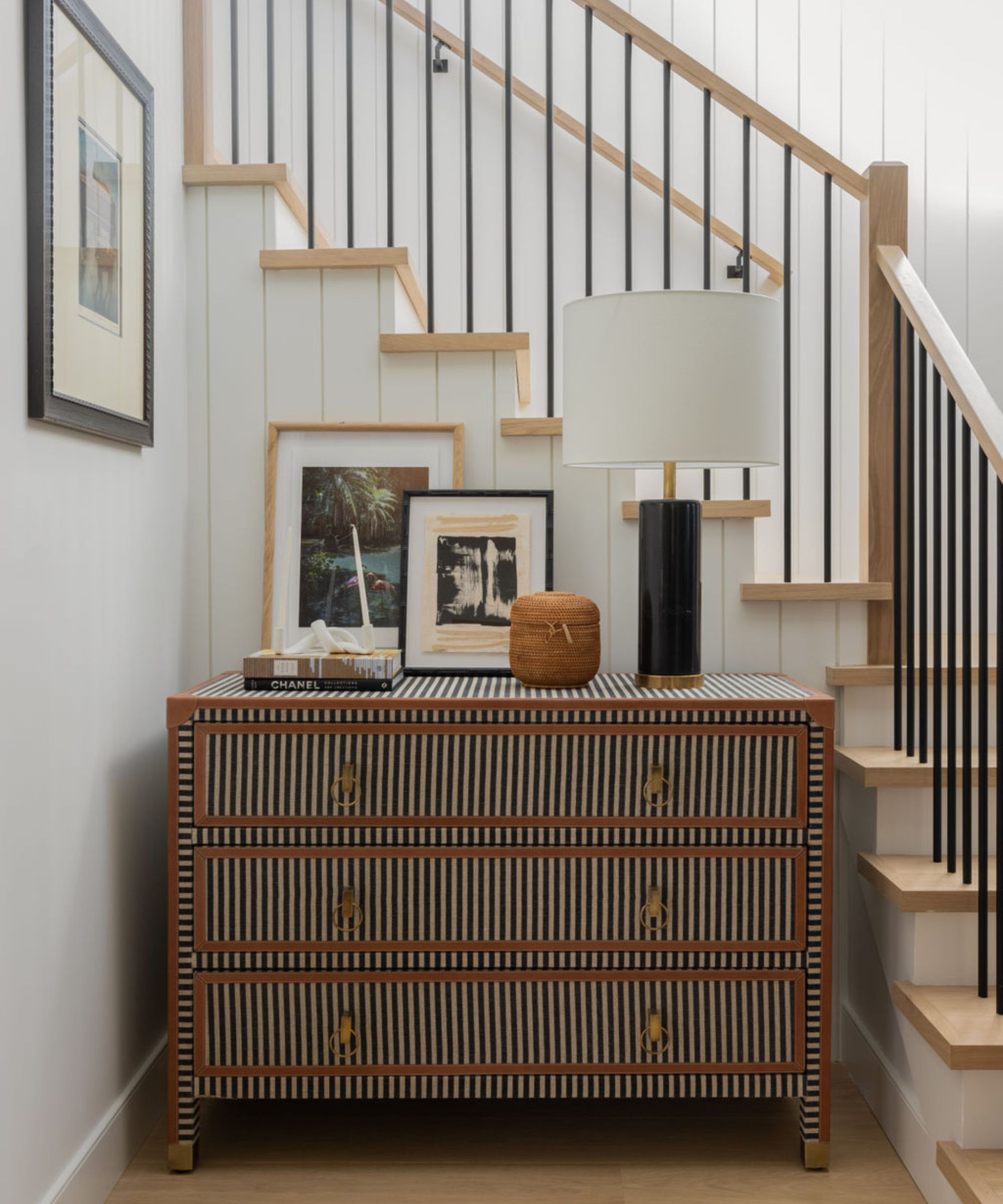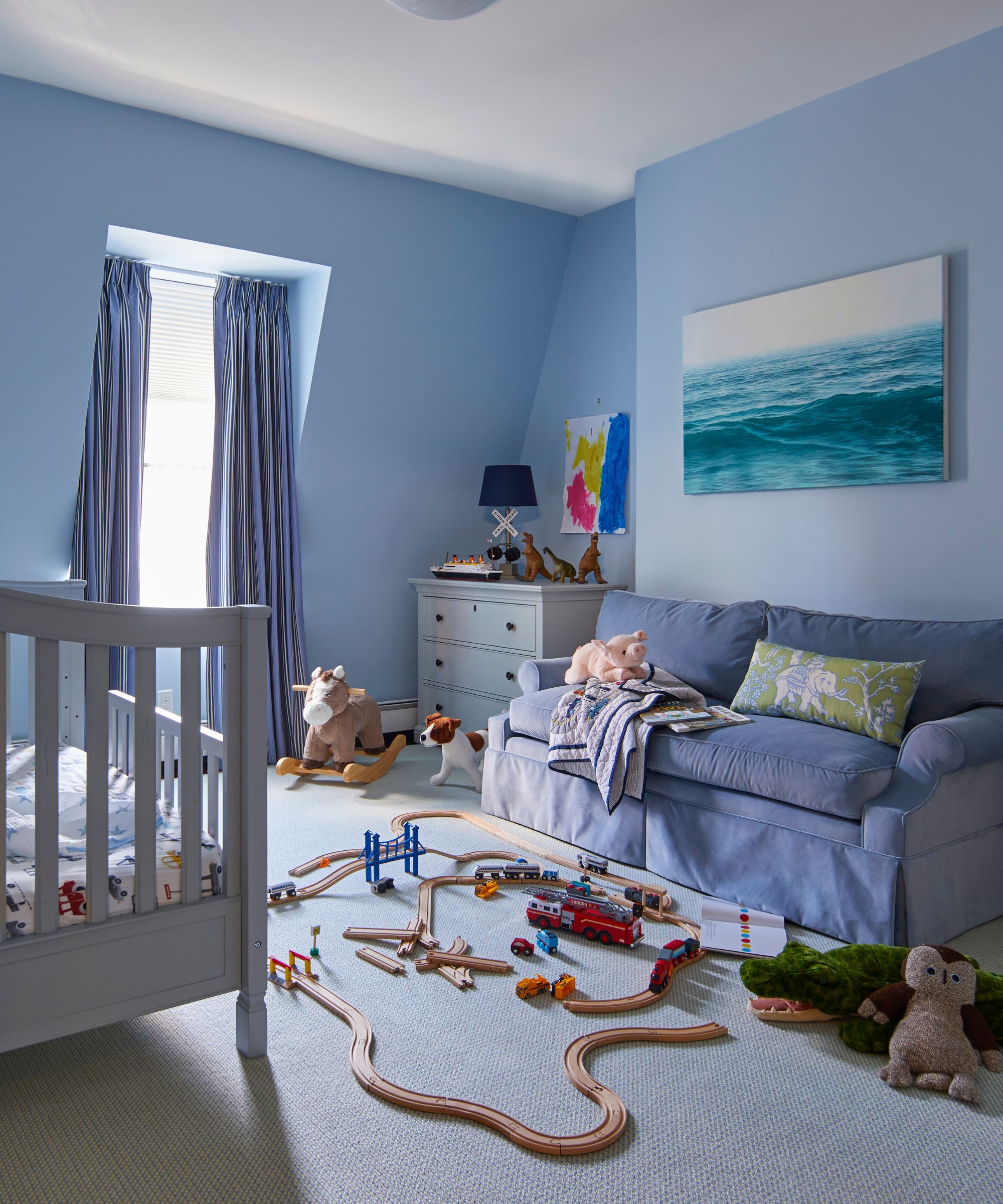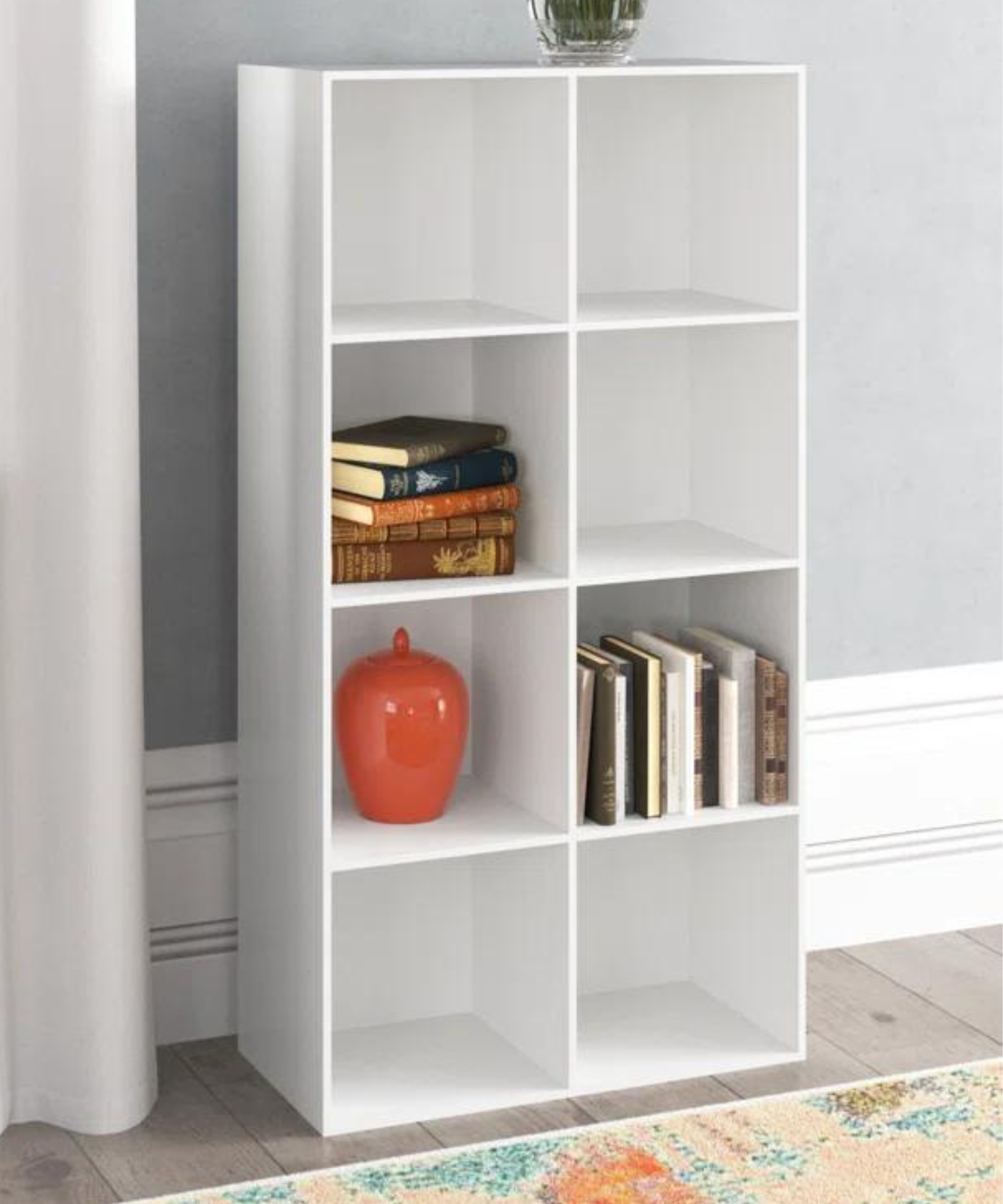Experts reveal the best anti-tip devices to secure your freestanding furniture – to avoid damage, injury and fatal accidents
Learn how to protect your loved ones, furniture and floors with these devices


One of the most overlooked and serious issues related to home safety is securing freestanding furniture with anti-tip devices. There's a variety of options and it's key to install them to make sure your furniture doesn't end up a crush risk.
Anti-tip devices are small, unseen fixtures, which can save a loved one from a fatal accident, or damage to your furniture and floors. They are not just about functionality, but they can also help to ensure peace of mind, knowing that your heavy home furnishings are secure.
Our experts share their tips on this home maintenance task, revealing why anti-tip devices are so important and how you can effectively use them throughout your home.
What is an anti-tip device?

Freestanding drawers
Anti-tip devices are an essential part of home safety for securing free-standing furniture to a wall or floor. These devices are designed to prevent heavy pieces of furniture, like dressers, bookshelves, and cabinets, from tipping over and causing injury, particularly in homes with small children or pets.
They usually work by attaching firmly to the item, and anchoring them securely to the wall behind. This works to stop them tipping over and crushing someone underneath, damaging the unit, or flooring.
Why are anti-tip devices important?

A playroom with freestanding drawers
The risks of tipping freestanding furniture are much more serious than most of us can imagine. The U.S. Consumer Product Safety Commission (CPSC) reports that furniture tip-overs are responsible for at least one child fatality in the United States every two weeks. Moreover there are approximately 25,500 reported injuries from furniture tip-overs treated in emergency rooms every year. Nearly half of these injured people are children under the age of 18, emphasizing the urgency of this issue.
These statistics highlight the need to anchor furniture, as it can easily topple over even when that furniture appears to be secure. Children often climb on furniture, using drawers or shelves for a boost, which tremendously increases the chances that furniture will overturn. There is a very real danger of injury and even death from crush injuries, but if proper devices are installed, then the risk easily steers away from those harsh realities.
Design expertise in your inbox – from inspiring decorating ideas and beautiful celebrity homes to practical gardening advice and shopping round-ups.
Where should anti-tip devides be used around the home?

A freestanding item of storage furniture from Wayfair
Most people think that pieces of their furniture are weighty enough to stay put at all times. However, many such items can become dangerous if they are pushed or climbed on without proper securing.
Anti-tip devices should be used in any room where furniture is present, but they are especially important in areas frequented by children, such as bedrooms and playrooms.
Learn how to secure furniture to walls in our dedicated guide.
- Living rooms: Secure bookshelves, entertainment centers and speakers.
- Bedrooms: Anchor dressers and tall wardrobes. Tip-over tends to happen frequently in the bedroom as children climb on such pieces to get to toys or items on top.
- Children’s rooms: Toy chests, storage units, and any tall furniture near cribs or beds.
- Home offices: File cabinets, bookshelves, and desks, particularly those with heavy monitors or equipment.
- Kitchens: Free-standing cabinets or shelving units, and even large appliances like refrigerators in earthquake-prone areas.
- Storage rooms: Garage shelving units can also fall over if not anchored.
What is the risk if you don’t use an anti-tip device?
If anti-tip devices aren’t used, the risk of injury or death significantly increases, particularly for young children who may climb or pull on furniture. Apart from physical harm, there is the potential for property damage, which can result in costly repairs, medical expenses, or lawsuits. Failing to secure heavy or tall furniture also poses a risk during earthquakes or other natural disasters.
A lack of tip-over restraints may also cause a domino effect of more tipping. One tipped piece of furniture will fall and cause another piece to tip, and so on. Where the room contains many unsecured pieces this chain reaction can result in a small item being insecurely fitted and toppling, which then turns into a much larger issue.
What anti-tip fixtures are available?
Adjustable furniture straps
Nylon or plastic straps that secure furniture to the wall is an effective anti-tip device. Flexible, easy to install and reliable Josh Rudin, professional contractor and owner at ASAP Restoration recommends Safety 1st Furniture Wall Straps from Amazon, as they can accommodate different sizes of furniture whilst being both easily adjustable and removable.
Anti-tip safety anchors
As for furniture, you can buy some furniture anchors, which consists of a strong piece of steel cable and a clevis pin on both ends (mounted to the wall and to the furniture). These anchors should always be to hand when you start any DIY project.
‘These screw into both the furniture and the wall and are discreet once installed,’ Josh continues. ‘Hangman 400 lb furniture anti-tip kits from Amazon, are a very popular option, especially in earthquake-prone areas. which costs around $10.
Metal wall brackets
These are among the most effective. Brands such as Hangman All Steel Anti-Tip Kit from Walmart use the heavy-duty brackets that secure your furniture to studs in the wall.
Built-in safety features
Some modern furniture comes with built-in anchoring systems designed by the manufacturer, which are tailored to the item’s specific size and weight.
Whilst traditional wall anchoring and anti-tip devices should be used, you can also secure your furniture with tension rods and even magnetic anti-tip kits, as they too provide functional solutions. These alternative devices do not stick out in the way traditional anti-tipping devices do, and as such do not interfere with the design of the house.
FAQs
How do you secure a TV from tipping?
According to Jay Sanders, licensed contractor and owner of Castle Dream Construction and Maryland Contractors, you can secure a TV by buying universal flat screen TV safety straps that can be conveniently mounted to any flat surface. Jay recommends buying QuakeHOLD TV safety straps from Walmart that come with strong adhesive strap tapes that cost around $40.
In addition to what has been shared above, you should regularly check your anti-tip devices every six months to ensure they haven’t loosened over time. This is especially important in areas prone to earthquakes.
One of the oft-overlooked ideas is not overloading furniture, especially open shelving units. Don't put too much heavy stuff on it and should an item fall, it should be kept lower to the ground so as not to tip over. Teach children not to climb on furniture. Prevention goes beyond hardware and creating an overall safe environment.
Finally, remember to always follow the manufacturer's guidelines carefully when installing anti-tip devices, or consult a professional for help with heavier or more complex setups.

Seraphina is a contributing editor at Homes & Gardens, writing Solved features on organizing and storage. She loves to decorate and also grow her own produce from her home in London. Her previous experience includes working at Women's Health and Fabulous Magazine.